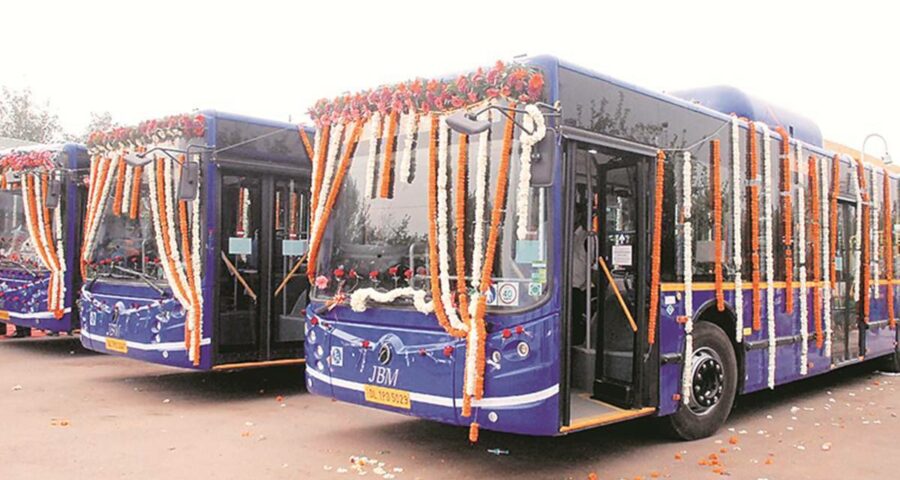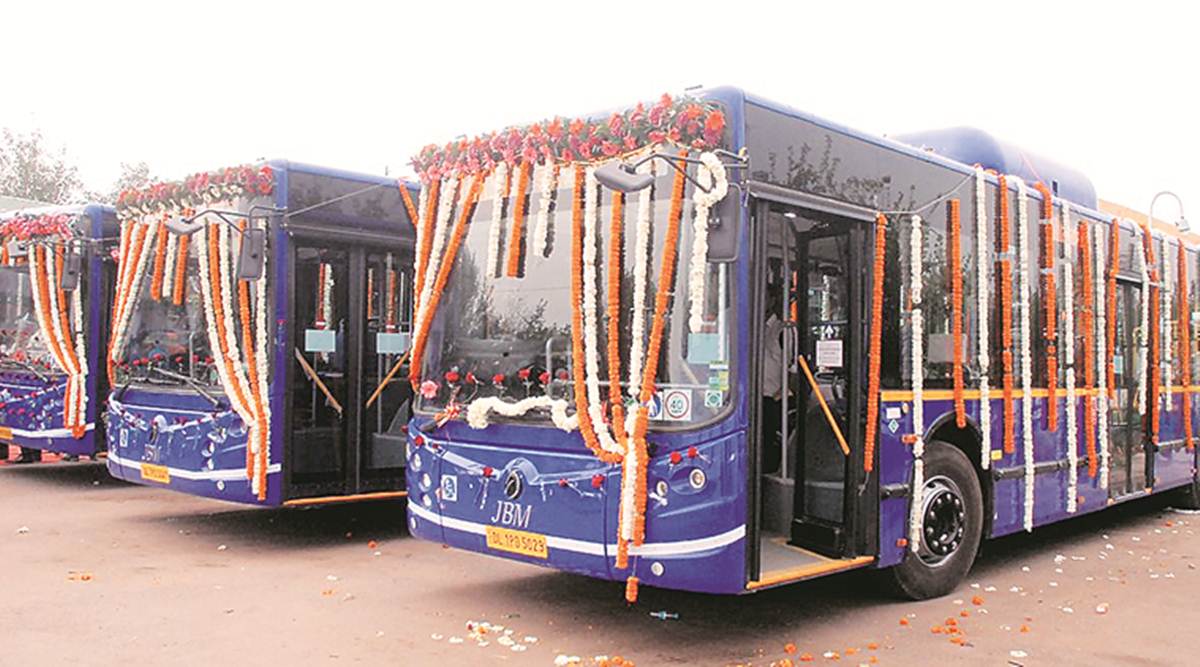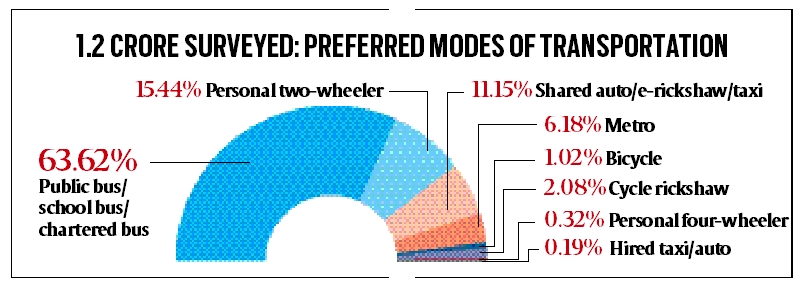The Metro is popularly known as Delhi's lifeline and is credited with radically transforming the city's public transport system.
The Delhi Metro network, which grew from 8 km to 380 km between 2002 and 2021, is used by 6.18 per cent people in the city for commute, with over 60 per cent public still dependent on buses, the Delhi government’s socio-economic survey has found.
The Metro is popularly known as Delhi’s lifeline and is credited with radically transforming the city’s public transport system. On the other hand, the fleet of public buses, especially under the Delhi Transport Corporation, has steadily shrunk over the last decade.
On Friday, the DTC placed orders for 1,000 low-floor CNG buses, a decade after buses were last inducted in the corporation. There are approximately 6,693 public buses — 3,760 DTC and 2,933 cluster buses — in the capital as of now, as against the Supreme Court-mandated requirement of 11,000 buses.
“Congratulations Delhi! After 12 years of wait, orders have been placed by DTC to induct 1,000 low-floor AC CNG buses. All these buses will be on road by September 2021. Delhi government is committed to a pollution-free Delhi by building a world-class public transport system,” Chief Minister Arvind Kejriwal tweeted.
According to the findings of the survey, accessed by The Indian Express, the preferred mode of 63.62 per cent of the people is “public bus/school bus/chartered bus” and 6.18 per cent take the Metro. Metro usage is highest among residents of the New Delhi district (10.89 per cent) and least in case of northeast district (3.16), which joined the Metro network with the introduction of the Pink Line in 2018 and remains highly dependent on shared autos and cabs.
The survey, the biggest of its kind, covered 1.02 crore people and was conducted between November 2018 and November 2019.
While the Metro tickets range between Rs 10 to Rs 60 depending on the distance travelled, bus fares are relatively low, with the minimum and maximum fares being Rs 5 and Rs 15 in case of non-AC buses and Rs 10-Rs 25 in case of AC buses.
Residents of the north district use buses the most (75.18 per cent), while Shahdara sees the least use (50.25 per cent).
In case of Shahdara, 21.51 per cent people use personal two-wheelers for commuting — above the city average of 15.44 per cent.
The survey found that despite the acute shortage of buses in the city, it remained the most preferred mode of commute to the workplace, educational institutes or other places. Only 0.32 per cent of the people use personal four-wheelers.
The preferred mode of commute is along the lines of ownership of private vehicles, as detailed in part one of the survey, findings of which were published by The Indian Express last September.
It had revealed that of the 20.05 lakh households surveyed, 51.78 per cent of the households declared to be owners of personal vehicles, out of which 40.35 per cent possess only two-wheelers, 4.34 per cent households only four-wheelers and 6.59% households possess both two- and four-wheelers.
The survey also found that 11.15 per cent people use shared autos, e-rickshaws and shared taxis to commute.
Only 0.19 per cent of those surveyed use hired autos and cabs, 1.02 per cent commute on bicycles, and 2.08 per cent on cycle rickshaws.
Source: Read Full Article



